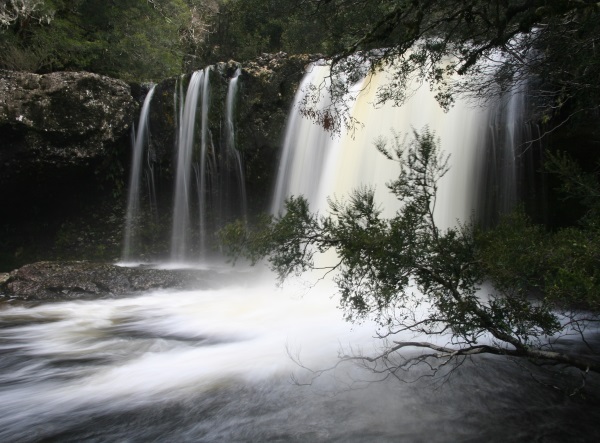Discover wineries and the ‘Serengeti of Tasmania’ at the head of the Tamar Estuary to Beauty Point, with stunning views across the Tamar Valley. It’s perfectly situated to explore Tasmania’s wine route in the Tamar Valley and Narawntapau National Park, known as the ‘Serengeti of Tasmania’ for its abundance of wildlife and birds.
 Head for the beautiful Great Western Tiers, where you’ll find stunning views, organic meals and guided forest walks. The valley retains the landscape values of 19th Century rural Australia. There are no power-lines or intensive agriculture to spoil the soft lines of the valley edge. All householders living within the valley use alternative power for their domestic needs.
Head for the beautiful Great Western Tiers, where you’ll find stunning views, organic meals and guided forest walks. The valley retains the landscape values of 19th Century rural Australia. There are no power-lines or intensive agriculture to spoil the soft lines of the valley edge. All householders living within the valley use alternative power for their domestic needs.
In the lost valley of quolls, devils and platypus, your log cabin tonight is in a valley known to almost no one apart from those lucky enough to stumble upon it, deep in the north western wilderness.
After a night in the wilds watching devils and wallabies, it is time to head west for a touch of Gallic gourmet luxury in B&B heaven, owned by Ginette and Remi Bancal – Remi was the chef at the Ritz, Paris before moving to Tasmania. An hour and a half drive from there brings you to the stunning glacial and alpine World Heritage landscape that is home to the poetically-named Cradle Mountain and Dove Lake…
And as your wheels hit the road once more of Tasmania’s wonders open up before…
Land for Wildlife
Several of the B&Bs on this itinerary are protected Land for Wildlife conservation areas and a number of them are part of the Tasmanian Land Conservancy scheme. The TLC is a non-profit organisation that acquires and manages land in Tasmania, protecting important natural places. Many are within or on the edge of national parks. For example, one of the properties you will stay in is 61ha and has been owned by your hosts since 1979. They have built the accommodation themselves using all Tasmanian timbers. They joined National Parks and Wildlife’s scheme ‘Land for Wildlife’ as a commitment to their desire to preserve the natural habitat for wildlife. In 2002, they signed an agreement with both Federal and State Governments and placed a Perpetual Conservation Covenancy on the property title under the ‘Private Forest Reserve’ programme to protect the vulnerable forest habitat of the wet forest type Eucalyptus Viminalis (White Gum) of which there are many old growth specimens, protection for the Karst system and threatened fauna species. Like many properties, the reserve is a release for rehabilitated wildlife.
The reserve is home to many of Tasmania’s native wildlife, including the Tasmanian Devil, the Spotted Tail Quoll (both threatened species), brush tail and ring tail possums, Pademelon






